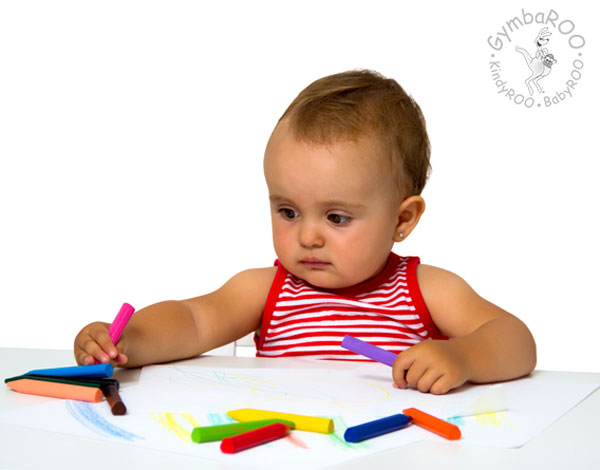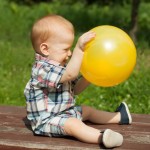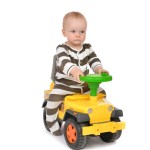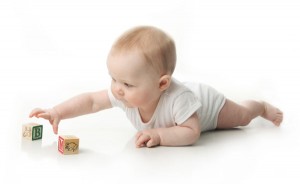oin the thousands of parents already raising smarter, happier babies with our online baby classes: The Active Babies Smart Kids series. Click here.
GymbaROO-KindyROO kids are excelling academically, emotionally, in leadership roles and on the sporting field. Find us at: GymbaROO-KindyROO
Dr Jane Williams and Bindy Cummings
This is such a good question and one parents will often ask at GymbaROO-KindyROO. The answer is fascinating.
When a child develops a preferred hand (or handedness) is linked to the development of the brain. In most cases, your little one should not be right- or left-handed in the first two years of life and this is why.
The brain is divided into two major sides or hemispheres, the left hemisphere and the right hemisphere. During the first couple of years of life these two hemispheres are working fairly independently of each other. Message pathways from the left side of the body go to the right side of the brain and the pathways from the right side of the body go to the left side of the brain.
During this time, both sides of the brain are learning how to get their side of the body to perform different types of functions individually or at the same time as each other. This is why your older babies and toddlers can generally only do purposeful movements that involve:
- Both sides of the body doing the same movement. For example, arm exercises where both arms go out, up or shake; throwing a ball two handed; pushing along on a scoot-around toy with both feet; bobbing – where both legs bend, leading to jumping with two feet off the ground (at around two years of age).
- One side of the body doing its own thing. For example, using either the right or left hands for eating, dropping food off the high chair, picking up objects, ‘drawing’ etc. Which hand is used will depend on which side the object is placed.
What is very important for parents to know is that during this time both sides of the body and brain need to be equally well developed. Babies and toddlers should not be right or left handed, but rather be given the opportunity through touch and movement experiences to develop both sides of the body equally.
During this time the information coming to both hemispheres of the brain from the body’s sensory and motor systems is helping your baby and growing child to:-
- Combine the two sides of their bodies in similar actions – laying those movement patterns down in their brains. These movement patterns are a prerequisite for the next level of brain and body development. The more experience of these movement patterns within each stage of development the better!
- Develop a ‘picture’ of the body and an understanding of what the body can do. This is called body awareness and is a crucial building block and for future academic and sporting skills. Access GymbaROO’s free video on how to help your baby develop Body Awareness here.
It is only if the child has had plenty of these sensory and motor experiences as an infant and toddler, that the brain can properly mature and can move smoothly into a process called ‘lateralisation’ where certain functions become specialised in one hemisphere of the brain. This generally happens during the third year of life. Now the communication between the two hemispheres really gets going and the child becomes able to do different actions with the two sides of the body at the same time. They develop the ability to pedal a tricycle – one foot coming up as the other pushes down; put up each arm alternatively in exercises; some beginning hopping on one foot and throwing one handed with a cross pattern action. They can now peel a banana, dry up a cup, unscrew a lid – all of which involve the process of holding with one hand and performing an action with the other.
It is through the process of lateralisation that children will develop a preferred hand, foot and eye, that is – become right- or left-handed.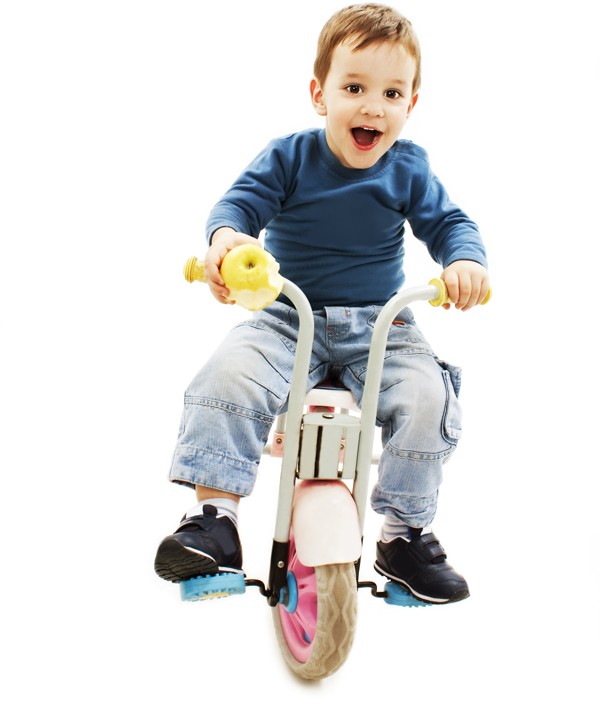
By the age of three and a half the majority of children should have attained a preferred hand. Researchers have noticed that children who attend school without a preferred hand may find learning more challenging than a child who has a preferred hand. If your child is four years of age and has not yet developed a preferred hand it may be a result of genetics, but it may also be due to a developmental immaturity. While this has nothing to do with a child’s intelligence, it can be a nuisance and a disadvantage if your child goes to school with no preferred hand. They may be confused about which hand to write with and they may have difficulty with which way the letters go. Reversals are a common difficulty for many of these children.
How can we help children develop laterality and a preferred hand at the appropriate age?
Do not be in a rush for your child to move through any developmental stage. Each stage provides your little ones with the experiences necessary for the next developmental level of achievement.
Activities that best assist in the development of a preferred hand are those that stimulate and help mature the brain pathways on both sides of the brain. Importantly many of these activities need to focus more on whole body movements and actions rather than just on the hand. Access lots of these activities for babies here.
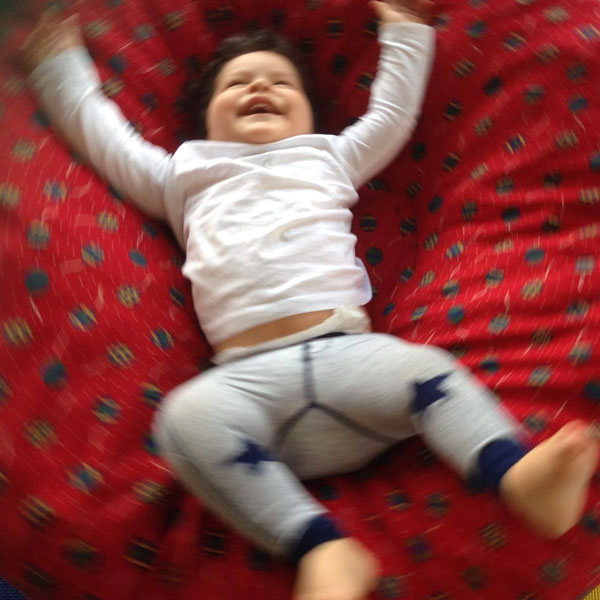
Movement that involves spinning, rolling, tumbling, swinging and dancing stimulates the balance organs in the brain. These organs play an important role in telling the brain where the body is in space and what movements are necessary for posture, response to stimuli and action. Children need good balance and coordination for healthy brain maturation and the development of handedness. Be careful not to go overboard with these types of activities, let your children guide you – they need to be loving what they are doing for it to help their learning.Children vary greatly in their attainment of specific skills, so respect their capabilities and reactions.
Babies
- The easiest way to help our babies during their first year is by ensuring that they go through all the normal sequential movements of infancy: rolling, crawling, creeping, cruising and walking are all important.
- An important prerequisite for laterality and handedness is body awareness. It is never too early to give infants an awareness of the two sides of their bodies. When bathing, massaging and dressing your babies, talk about their right sides, left sides, hands and feet, e.g. now we put your left arm through the hole, your right shoe on etc. Touching the infant while saying the words is important and messages are more likely to be computed by the brain when they enter from more than one sense – so by touching (feeling), saying (hearing) and seeing (visual) what you are doing the brain is getting a good ‘hit’! Remember that your child only learns the words you are saying after hearing them hundreds of times – so you have to say them again and again! Learn activities to help your baby’s speech development here.
- When playing and feeding ensure that both the left and the right side get approximately equal share of objects, food and spoons, i.e. offer the spoon to both the left and the right side or have one for each!
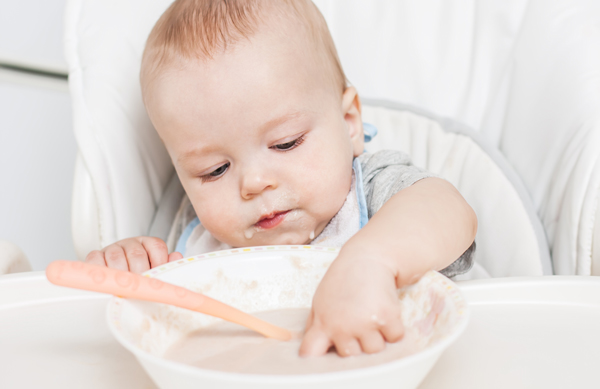
Toddlers
When they are walking give them lots of opportunities for climbing and balancing – up and down stairs, slopes and the like. Learning to balance is an important step towards the development of laterality and handedness as children are developing an internal awareness of how their body moves, balances and responds to gravity – all of which are essential for laterality.
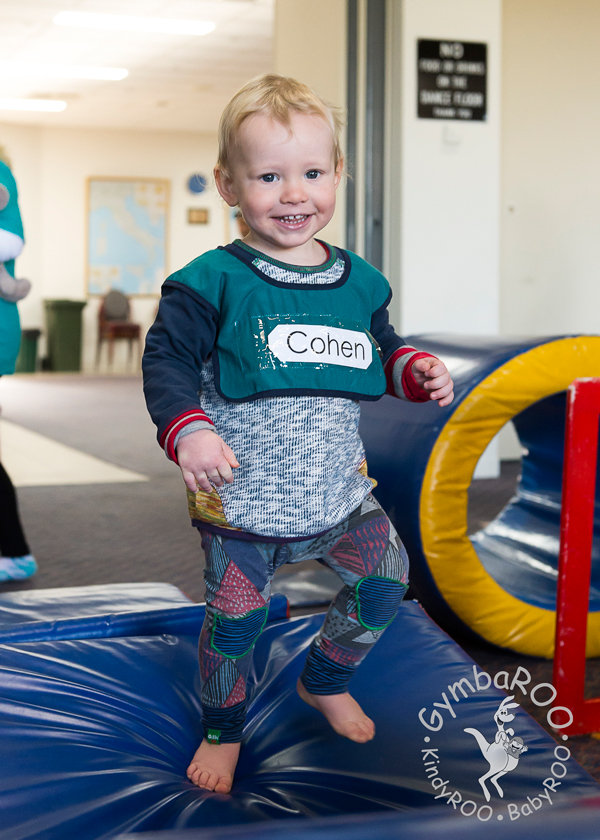
- Encourage balancing by holding on to your child’s hand, or both hands for a more even balance position, when they first try an activity that requires careful balance. Once they have negotiated the new skill a couple of times, don‘t forget to let go and just support them by holding the back of their arms, or shirt or trousers! It is impossible to develop even balance skills if a parent holds a child’s arm up in the air all the time!
- Run up and down slopes, balance along gutters, low walls, low beams and planks.
- Do plenty of GymbaROO-KindyROO style exercises, bobbing, scudding on push-alongs and jumping on a trampoline (great for balance – but make sure you supervise!).
- All animal movements help develop coordination and balance which are prerequisites for the laterality stage of development, so encourage your child to imitate different animal walks: tigers, cats, dogs, echidnas and wombats – these crawling and creeping movements are great for stimulating the development of motor patterns in the brain.
Dr Jane Williams (PhD, BMgt, RN(Paeds)) is the Research and Education General Manager for GymbaROO and KindyROO. Dr Williams is one of Australia’s leading experts on baby and child development. More on Dr Williams here.
Bindy Cummings (B.Ed(Human Movement) Hons) has worked as a teacher, child development consultant, early childhood development lecturer, teacher trainer and INPP & iLS consultant. She is the co-creator of GymbaROO’s Active Babies Smart Kids online series, has authored many published articles on child development. She is working on the content and development GymbaROO’s portal and online training programs, and the creation of new online programs for parents and children. More on Bindy Cummings here.
GymbaROO-KindyROO
Thousands of parents, babies and children are presently involved in our programs and creating rising stars. GymbaROO-KindyROO kids are excelling academically, emotionally, in leadership roles and on the sporting field. Come join all the fun and learning! “GymbaROO – The best decision I ever made for my child.” Classes from 6 weeks old – 7 years GymbaROO KindyROO
Active Babies Smart Kids – Online Baby Classes
GymbaROO-KindyROO’s online series of baby classes is taking the parenting world by storm! It is highly recommended by doctors, paediatricians, early childhood experts and the Maternal Child and Family Health Nurses Association. This series is being called: “The essential guide for parents”. Join the thousands of parents already playing with their babies from birth, in the best way for brain and body development and laying crucial foundations for future learning. What happens in the first year, not only matters, it matters a lot! See Introductory video below.
Active Babies Smart Kids online series – Click here.
Try the first class FREE! Click here to watch our Active Babies Smart Kids Episode 1 – Tummy Time
Enjoy the following GymbaROO-KindyROO articles
GymbaROO-KindyROO: Who, what, where, why and how
All about GymbaROO-KindyROO’s online baby classes for parents and babies: Active Babies Smart Kids
Become a GymbaROO-KindyROO franchisee
Finger Painting – A Brilliant Activity for Babies and Toddlers.
Toilet Training. When, Why and How.
How to raise a smarter, happier baby.
Why GymbaROO kids excel at sport.
Baby Development Classes. Why GymbaROO for Babies?
Click here for more GymbaROO-KindyROO article choices

